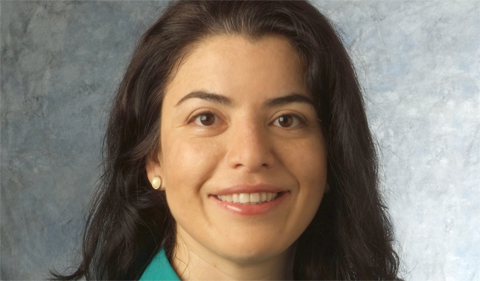The Nanoscale & Quantum Phenomena Institute Seminar series presents Dr. Burcu Gurkan discussing “Solvation and Electrode-Electrolyte Interfacial Structure in Ionic Liquids and Deep Eutectic Solvents ” on April 8 at 4:10 p.m.
For virtual meeting information, contact NQPI Administrative Specialist, Joni Staggs
Gurkan is a Distinguished Assistant Professor with the Department of Chemistry at Case Western Reserve University.
Abstract: The high solvent strength, negligible volatility and tunable physical properties of Ionic liquids (ILs) and Deep Eutectic Solvents (DESs) present opportunities in energy storage in terms of improved safety and accessibility to different chemistries and mechanisms. ILs are composed of discrete ions with no neutral solvent molecule while DESs are mixtures of hydrogen bond donors and acceptors; both yielding heterogenous electrolytes that are concentrated. Solvation and ion transport in these solvents are complex and the associated structure and mechanism are important to understand in order to tune for the benefit of energy storage. In the case of ILs, which are better suited for Li-ion type energy storage owing to their electrochemical stability, small charged ions such as Li+ is solvated by counter anions resulting in ion aggregates with slower mobility. Our study shows, in the presence of multiple IL anions competing to partially solvate Li+, these aggregate structures can be weakened thus encouraging improved ion transport. In the case of DESs, which are better suited for redox flow batteries owing to their moderate electrochemical stability, electrostatic charges are weakened by extended Hydrogen bonding and species that are capable of integrating into the interstitial space or the Hydrogen bonding network are the most soluble. Although both ILs and DESs are thought to be structured fluids with similar characteristics, the potential-dependent differential capacitance measurements show distinction between the representative DES ethaline (1:2 molar mixture of choline chloride and ethylene glycol) and those of ammonium, imidazolium and pyrrolidinium-based ILs in terms of its shape: U-shaped for ethaline versus camel-shaped for ILs. This presentation will compare and contrast ILs and DESs in terms of their liquid structure that is pertinent to electrochemical kinetics.




















Comments